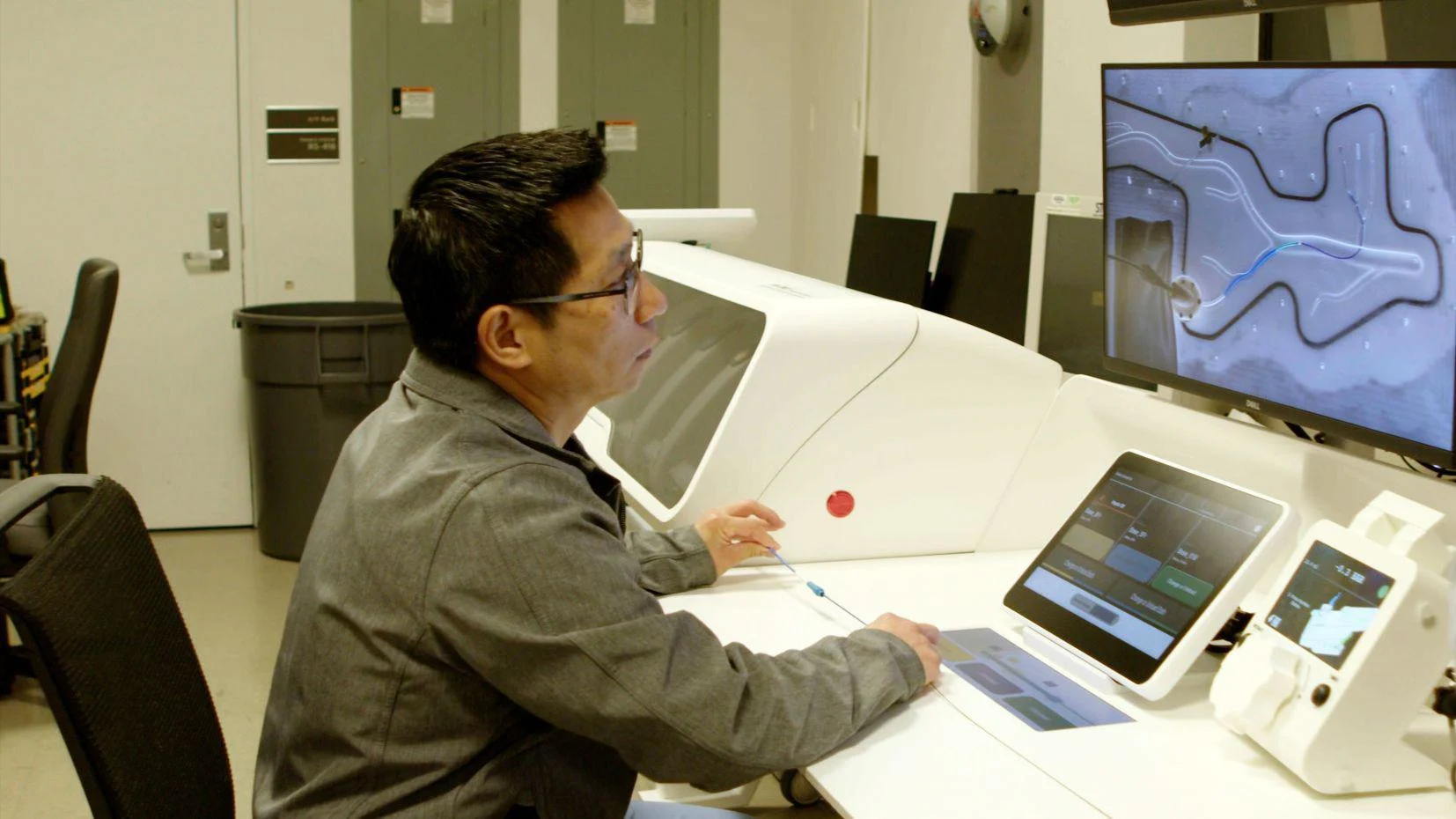Doctors Perform First Remote Robotic Stroke Procedure Across the Atlantic
Doctors in Scotland and the United States have completed what is believed to be the world’s first remote robotic stroke procedure on a human body, demonstrating a potentially transformative future for emergency stroke care.
Prof. Iris Grunwald of the University of Dundee carried out a robotic thrombectomy—removal of a blood clot—from Ninewells Hospital while operating on a human cadaver located elsewhere in the city. Hours later, neurosurgeon Dr. Ricardo Hanel replicated the procedure from Jacksonville, Florida, more than 4,000 miles (6,400 km) away, using the same robotic system.
In this earlier demonstration of the technology, it shows how a doctor - who could be anywhere - can move the wires, and the technology records the movement
The technology, developed by Lithuanian company Sentante with connectivity support from Nvidia and Ericsson, allows a surgeon to remotely manipulate catheters and guidewires in real time while viewing live X-ray imaging. A clinician at the patient’s location only needs to set up the initial access point—after that, the remote surgeon performs the procedure as though physically present.
The demonstration was performed on four cadavers at the University of Dundee, which uniquely trains doctors on human bodies with fluid systems that mimic blood flow. It marks the first time a full mechanical thrombectomy has been carried out robotically on a human body rather than synthetic or animal models.
In this same demo, the robot - which could be attached to a patient - replicates the movement of the remote surgeon
If approved for clinical use, the technology could dramatically widen access to life-saving stroke treatment. Thrombectomy is highly time-sensitive, but only a small fraction of patients currently receive it due to limited specialists and geographic constraints. Being able to perform the procedure remotely could allow stroke experts to treat patients in rural or underserved areas without delay.
Prof. Grunwald described the moment as “the first glimpse of the future,” adding, “Where this was once science fiction, we have now shown it can be done.”
Clinical trials are expected to begin next year.

